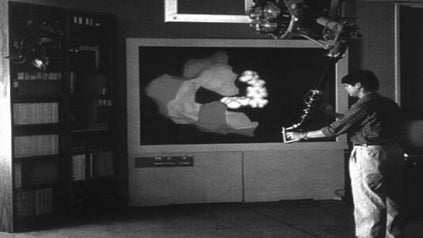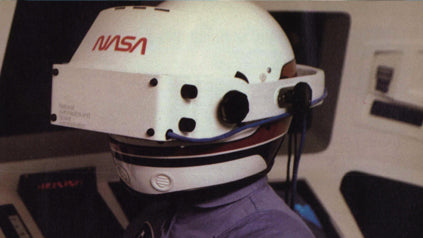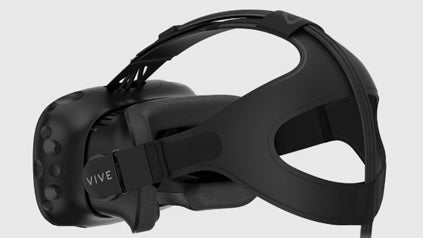
-
-
Social
- CONDITION OF THE WORLD
- WATCH TRAILER
- OUR STORY
- MULTIMEDIA
VIRTUAL REALITY
Virtual Reality is not a new challenge. The term existed approximately 60 years ago.
WHAT IS VIRTUAL REALITY?
Interact with a world without being in it.
Virtual Reality or better known as VR for its acronym in English (Virtual Reality) is a digitally generated three-dimensional environment, which creates the sensation of being immersed in it, generating a real appearance of an environment different from the one found.
HOW DOES IT WORK?
Virtual Reality does not need an airplane to transport you to another world.

To immerse yourself in an experience it is necessary to have Virtual Reality glasses and a control, these are usually connected to a computer, console or cell phone that generates the virtual environment. For greater interaction there are gloves, sound effects, booths with special effects, among others.
Note: each virtual reality device needs different devices and mechanisms for its operation. On this site you will find a general list.
HISTORY AND ADVANCES OF TECHNOLOGY
A reality built for 60 years.
1960: SENSORAMA

Virtual Reality was considered for the first time in the 60's by the director of photography Morton Heilig to perform a sensory theatrical experience where the user could live the experience in a sensor, a cabin with stereoscopic images, stereo sound, fans and smells. But this project could not be developed due to different factors, one of them was a lack of budget.
View source1961: HEADSIGHT

A company called Philco Corporation built the first virtual reality helmet, which connected to a system of closed-circuit cameras that shot images according to the angle of their position. It was the first immersive experience that included Virtual Reality glasses and was used for dangerous situations, one of them so that the pilots could have a clear field of vision in the dark.
View source1966: THE LAST SCREEN

The computer scientist Iván Sutherland built the first Virtual Reality helmet connected to a computer system. It was the first time that the graphics were created from a computer, with stereo images and designed so that the field of vision changes according to the user's movement. Something very similar to the contemporary, but with the technology of the time.
View source1971: GROPE

Engineer Frederick Brooks created the GROPE project in which he began the interaction in Virtual Reality, studying the molecules for touch systems
View source1976: VIDEOPLACE

The computer artist Myron Krueger developed a system in which a screen and cameras made people silhouettes interact and all their movements were projected on the screen. This was the beginning of the interaction with a 2D screen.
View source1982: VECASS

Armstrong Medical Research Laboratories developed a flight simulator, called Simulator of visually coupled airborne systems, where the fighter pilot used a Virtual Reality helmet to expand the vision outside the window thanks to the graphics provided.
View source1984: VIVED

Nasa developed a personal simulator where three-dimensional graphics and sounds could be seen, that is, videos in Virtual Reality.
View source1985: DATA GLOVE

The VPL company that developed and sold Virtual Reality products, one of these is the DataGlove, a glove that provides real-time tracking of the movement of hands and fingers transmitting to a processor that determines joint angles.
View source1989: BOOM

It was a small box with two eye holes that allow you to visualize two monitors with CRT technology and move in the virtual experience.
View source1992: CAVE

Instead of using a Virtual Reality helmet, the user first used glasses with an LCD shutter in a recreative box, which allowed an experience with more quality and resolution in the images.
View source1992: SEGA VR

It was the first video game in Virtual Reality, where thanks to glasses, a computer and headphones the user lived a totally immersive experience according to his time.
View source1994: VIRTUAL BOY

They were the first virtual reality glasses of the Nintendo brand that presented graphics in 3D colors.
View source2010: OCULUS RIFT I

Palmer Lucker, a technology enthusiast, developed the first Oculus VR Virtual Reality viewer CALLS oculus Rift, but by design it was launched to the developer market.
View source2014: OCULUS RIFT II

Oculus redevelops a developer kit with virtual reality glasses, with more pixels and an improved experience minimizing sudden movements.
View source2014: GOOGLE CARDBOARD

Google created the platform for users to create or buy their own Virtual Reality glasses suitable for Android phones at a low cost, providing a step-by-step idea with a folding cardboard template and two lenses.
View source2015: GEAR VR

The Samsung company in partnership with Oculus developed its first Virtual Reality glasses, where the 360 vision and wireless viewfinder were the protagonists. This device could only be used with some Samsung mobile phones
View source2018: LENOVO MIRAGE

Lenovo manufactures autonomous Virtual Reality glasses, that is, they offer an immersive experience without wires, cell phones or computers.
View source2018: OCULUS GO

Facebook develops its first autonomous Virtual Reality glasses at a low cost in the market, this with the aim of attracting new users to VR technology.1
View source2018: OCULUS RIFT

Facebook improves the Oculus Rift Virtual Reality glasses, special to connect to the computer and live an immersive experience in high quality.
View source2018: HTC Vive

HTC Corporation creates Vive VR its first Virtual Reality device consisting of a Virtual Reality glasses with 3-in-1 cable to connect to the computer and two wireless controls for an immersive experience.
View source-
Calling 101%
-
Construction 70%
-
Flood 10%
-
Mainland 30%
-
The Covenant 30%


